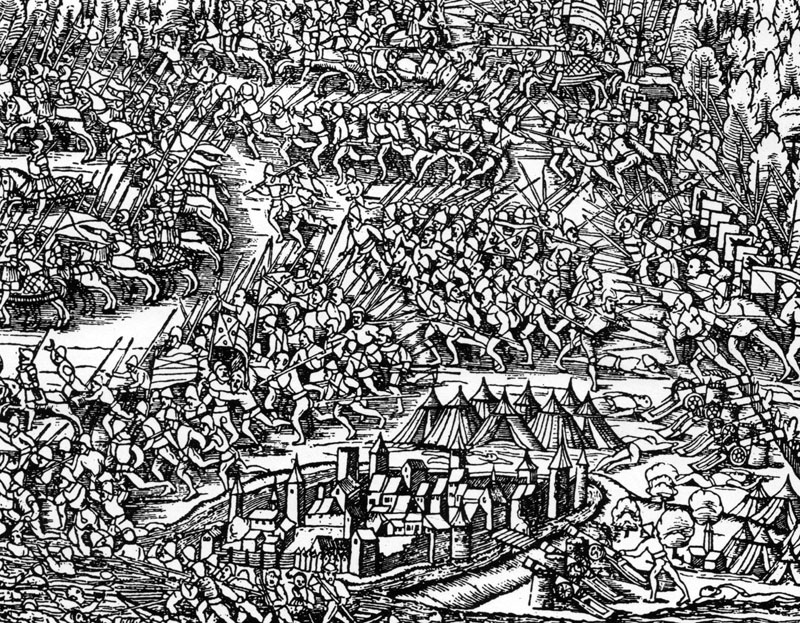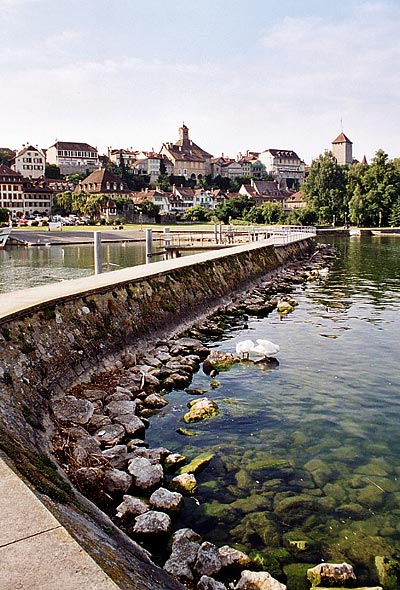|
Muntelier
Muntelier ( French name: Montilier; frp, Monteliér ) is a municipality in the district of See in the canton of Fribourg in Switzerland. It is one of the municipalities with a large majority of German speakers in the mostly French speaking Canton of Fribourg. History Muntelier is first mentioned in 1270 as ''Es Montelliers''. Geography Muntelier has an area of . Of this area, or 26.5% is used for agricultural purposes, while or 33.6% is forested. Of the rest of the land, or 36.3% is settled (buildings or roads) and or 3.5% is unproductive land.Swiss Federal Statistical Office-Land Use Statistics 2009 data accessed 25 March 2010 Of the built up area, industrial buildings made up 2.7% of the total area while housing and buildings made up 14.2% a ... [...More Info...] [...Related Items...] OR: [Wikipedia] [Google] [Baidu] |
See (district Of Fribourg)
See or Lac District (german: Seebezirk, french: District du Lac) is one of the seven districts of the canton of Fribourg in Switzerland. Lying to the north of the canton, the district is bilingual (French/German). Its territory enclaves the two Bernese municipalities of Münchenwiler and Clavaleyres, while its own village of Wallenbuch (now part of Gurmels) is an exclave within Bern. It has a population of (as of ). Municipalities See/Lac consists of the following seventeen municipalities: Coat of arms The blazon of the district coat of arms is ''Argent, a Lion rampant Gules crowned and armed Or on Coupeaux Vert.'' Demographics See/Lac has a population () of .. Two thirds of the population () speak German (67.1%) as their first language, French is the second most common (24.9%), there are (1.1%) who speak Italian and (0.1%) who speak Romansh. , the population was 49.9% male and 50.1% female. The population was made up of 13,164 Swiss men (40.6% of the population) and ... [...More Info...] [...Related Items...] OR: [Wikipedia] [Google] [Baidu] |
Murten/Morat
Murten (German) or Morat (French, ; frp, Morât ) is a bilingual municipality and a city in the See district of the canton of Fribourg in Switzerland. It is located on the southern shores of Lake Morat (also known as Lake Murten). Morat is situated between Neuchâtel and Fribourg and is the capital of the See/Lac District of the canton of Fribourg. It is one of the municipalities with a majority (about 75%) of German speakers in the predominantly French-speaking Canton of Fribourg. On 1 January 1975 the former municipality of Burg bei Murten merged into the municipality of Murten.Nomenklaturen – Amtliches Gemeindeverzeichnis der Schweiz accessed 9 February 2013 It was followed on 1 January 1991 by the former municipality of [...More Info...] [...Related Items...] OR: [Wikipedia] [Google] [Baidu] |
Murten
Murten (German) or Morat (French, ; frp, Morât ) is a bilingual municipality and a city in the See district of the canton of Fribourg in Switzerland. It is located on the southern shores of Lake Morat (also known as Lake Murten). Morat is situated between Neuchâtel and Fribourg and is the capital of the See/Lac District of the canton of Fribourg. It is one of the municipalities with a majority (about 75%) of German speakers in the predominantly French-speaking Canton of Fribourg. On 1 January 1975 the former municipality of Burg bei Murten merged into the municipality of Murten.Nomenklaturen – Amtliches Gemeindeverzeichnis der Schweiz accessed 9 February 2013 It was followed on 1 January 1991 by the former municipality of |
Galmiz
Galmiz (former French name: Charmey) is a former municipality in the district of See in the canton of Fribourg in Switzerland. On 1 January 2022 the former municipalities of Galmiz, Gempenach and Clavaleyres (Canton of Bern) merged into the municipality of Murten. History Galmiz is first mentioned in 1242 as ''Chalmitis''. In 1340 it was mentioned as ''Charmey''. Geography Galmiz has an area, , of . Of this area, or 70.5% is used for agricultural purposes, while or 18.7% is forested. Of the rest of the land, or 7.8% is settled (buildings or roads), or 0.8% is either rivers or lakes and or 2.1% is unproductive land.Swiss Federal Statistical Office-Land Use Statistics 2009 data accessed 25 March 2010 Of the built up area, housing and buildings ... [...More Info...] [...Related Items...] OR: [Wikipedia] [Google] [Baidu] |
Castiglione Falletto
Castiglione Falletto () is a ''comune'' (municipality) in the Province of Cuneo in the Italian region Piedmont, located about southeast of Turin and about northeast of Cuneo. Castiglione Falletto borders the following municipalities: Alba, Barolo, La Morra, Monforte d'Alba, and Serralunga d'Alba Serralunga d'Alba is a ''comune'' (municipality) in the Province of Cuneo in the Italian region Piedmont, located about southeast of Turin and about northeast of Cuneo. Serralunga d'Alba borders the following municipalities: Alba, Castiglione Fa .... Twin towns * Muntelier, Switzerland References Cities and towns in Piedmont {{Cuneo-geo-stub ... [...More Info...] [...Related Items...] OR: [Wikipedia] [Google] [Baidu] |
Bas-Vully
Bas-Vully ( frp, Bâs-Vulyi) is a former municipality in the district of See in the canton of Fribourg in Switzerland. On 1 January 2016 the former municipalities of Bas-Vully and Haut-Vully merged to form Mont-Vully. History Bas-Vully is first mentioned in 968 as ''Williacense''. Until 1831 it was known as ''vor Commune générale des quatre villages de La Rivière''. The municipality was formerly known by its German name ''Unterwistenlach''; however, that name is no longer used. Geography Bas-Vully had an area, , of . Of this area, or 70.2% is used for agricultural purposes, while or 12.6% is forested. Of the rest of the land, or 13.8% is settled (buildings or roads), or 2.9% is either rivers or lakes and or 0.6% is unproductive land.Swiss Federal Stat ... [...More Info...] [...Related Items...] OR: [Wikipedia] [Google] [Baidu] |
Inventory Of Swiss Heritage Sites
The Federal Inventory of Heritage Sites (ISOS) is part of a 1981 Ordinance of the Swiss Federal Council implementing the Federal Law on the Protection of Nature and Cultural Heritage. Sites of national importance Types The types are based on the Ordinance and consolidated/translated as follows: *city: german: Stadt, Stadt/Flecken, it, città, french: ville *town: german: Kleinstadt, Kleinstadt (Flecken), it, borgo, borgo/cittadina, french: petite ville *urbanized village: german: verstädtertes Dorf, it, villaggio urbanizzato, french: village urbanisé, rm, vischnanca urbanisada *village: german: Dorf, it, villaggio, french: village, rm, vischnanca *hamlet: german: Weiler, it, frazione, frazione (casale), french: hameau, rm, aclaun *special case: german: Spezialfall, it, caso particolare, french: cas particulier, cas spécial, rm, cas spezial References * External links ISOS* {{DEFAULTSORT:Heritage Sites Heritage registers in Switzerland Switzerland geograph ... [...More Info...] [...Related Items...] OR: [Wikipedia] [Google] [Baidu] |
Swiss People's Party
The Swiss People's Party (german: Schweizerische Volkspartei, SVP; rm, Partida populara Svizra, PPS), also known as the Democratic Union of the Centre (french: Union démocratique du centre, UDC; it, Unione Democratica di Centro, UDC), is a national-conservative, right-wing populist political party in Switzerland. Chaired by Marco Chiesa, it is the largest party in the Federal Assembly, with 53 members of the National Council and 6 of the Council of States. The SVP originated in 1971 as a merger of the Party of Farmers, Traders and Independents (BGB) and the Democratic Party, while the BGB, in turn, had been founded in the context of the emerging local farmers' parties in the late 1910s. The SVP initially did not enjoy any increased support beyond that of the BGB, retaining around 11% of the vote through the 1970s and 1980s. This changed however during the 1990s, when the party underwent deep structural and ideological changes under the influence of Christoph Blocher; the S ... [...More Info...] [...Related Items...] OR: [Wikipedia] [Google] [Baidu] |
2011 Swiss Federal Election
Federal elections were held in Switzerland on 23 October 2011. All of the Federal Assembly were to be elected: all 200 seats in the National Council and all 46 seats in the Council of States. Voter turnout was 49.1%, compared to 48.9% in 2007. National Council At the last election, in 2007, the Swiss People's Party (SVP) won the highest share of the vote ever recorded for a single party in Switzerland, with 29% of the vote. Soon after, a moderate faction split from the SVP, forming the Conservative Democratic Party (BDP). In the 2011 election, the two neophyte parties BDP and Green Liberal Party (GLP) were successful, each receiving 5.4% of the popular vote. Both the GLP and the BDP have gained the required five seats to form their own parliamentary groups, suggesting a split of the centrist CVP/EVP/glp group. All other major parties lost votes, the Swiss People's Party (SVP) for the first time since the 1987 elections. With 26.6% of the popular vote, the SVP is ... [...More Info...] [...Related Items...] OR: [Wikipedia] [Google] [Baidu] |
Social Democratic Party Of Switzerland
The Social Democratic Party of Switzerland (german: Sozialdemokratische Partei der Schweiz; SP; rm, Partida Socialdemocrata da la Svizra) or Swiss Socialist Party (french: Parti socialiste suisse, it, Partito Socialista Svizzero; PS), is a political party in Switzerland. The SP has had two representatives on the Federal Council since 1960 and received the second highest total number of votes in the 2019 Swiss federal election. The SP was founded on 21 October 1888 and is currently the second largest of the four leading coalition political parties in Switzerland. It is the only left-leaning party with representatives on the Federal Council, currently Alain Berset and Simonetta Sommaruga. As of September 2019, the SP is the second largest political party in the Federal Assembly. Unlike most other Swiss parties, the SP is the largest pro-European party in Switzerland and supports Swiss membership of the European Union. Additionally, it is strongly opposed to capitalism and ma ... [...More Info...] [...Related Items...] OR: [Wikipedia] [Google] [Baidu] |
Primary Sector Of The Economy
The primary sector of the economy includes any industry involved in the extraction and production of raw materials, such as farming, logging, fishing, forestry and mining. The primary sector tends to make up a larger portion of the economy in developing countries than it does in developed countries. For example, in 2018, agriculture, forestry, and fishing comprised more than 15% of GDP in sub-Saharan Africa but less than 1% of GDP in North America. In developed countries the primary sector has become more technologically advanced, enabling for example the mechanization of farming, as compared with lower-tech methods in poorer countries. More developed economies may invest additional capital in primary means of production: for example, in the United States corn belt, combine harvesters pick the corn, and sprayers spray large amounts of insecticides, herbicides and fungicides, producing a higher yield than is possible using less capital-intensive techniques. These technolo ... [...More Info...] [...Related Items...] OR: [Wikipedia] [Google] [Baidu] |
Green Liberal Party Of Switzerland
The Green Liberal Party of Switzerland (german: Grünliberale Partei der Schweiz, glp; french: Parti vert'libéral, pvl), abbreviated to glp, is a centrist green-liberal political party in Switzerland. Founded in 2007, the party holds sixteen seats in the Federal Assembly as of the October 2019 election. The party was formed on 19 July 2007 by four cantonal branches of the Green Party. Contesting the election in October 2007 in St. Gallen and Zurich, the party won three seats in the National Council. A month later, the party won a seat in the Council of States, with Verena Diener representing Zurich. The party has since expanded across Switzerland, and holds seats in thirteen cantonal legislatures in German-speaking Switzerland and the Romandy. The party reached 5.4% at the 2011 federal election, increasing the number of Members of the National Council from 3 to 12, suffered a setback in 2015 retreating to 7 seats with 4,6% of the national vote, only to recover in 2 ... [...More Info...] [...Related Items...] OR: [Wikipedia] [Google] [Baidu] |





